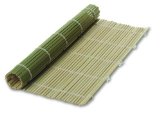Surprisingly, the addition of dot syntax to Objective-C 2.0 has been a major source of controversy. I wonder if there’s some kind of Bike Shed effect at work here: the problem dot-syntax causes is trivial1; while the clarity it brings to code is minor. So it essentially boils down to aesthetics. (For the record, I like the dot, even with it’s current flaws, but I don’t believe it’s worth fighting for).
The Actual Problem
The problem is that when you see a.b = c; you don’t know if it’s:
- Assigning the
bfield of astructtoc. This basically compiles down to onemoveinstruction. - Invoking the
-setB:method on an Objective-C object. By convention-setB:should update thebproperty of the object to hold the valuec, and nothing else. But it might have side effects, or be really slow.
A Solution
Using a different symbol to access Objective-C properties would remove all ambiguity. Nobody would mistake a@b = c; as assigning to a C-struct. It’s clearly an Objective-C construct.
But personally, I’m not a big fan of the @ character. It’s ugly; it’s noisy; there’re just too many lines in it. I think U+25B8 ‘BLACK RIGHT-POINTING SMALL TRIANGLE’ would make a better choice,
obj▸property = value;
And since ‘▸’ can’t be part of a valid C identifier, you can basically preprocess your code with s/▸/./, then compile it with existing tools.
Of course, it doesn’t matter what character(s) is picked, so long as it’s clearly different from existing C syntax; and you have a way of replacing it with a . before building it.
1 I’ve heard experienced developers complain that dot-syntax = a steeper learning curve for newbies, and that it can be confusing, but I haven’t actually seen one come out and say ‘I spent X hours debugging a problem that I couldn’t see because of it’. The fact is, any situation that dot-syntax would obscure is already pathological. In the end I just can’t see dot-syntax mattering much.
